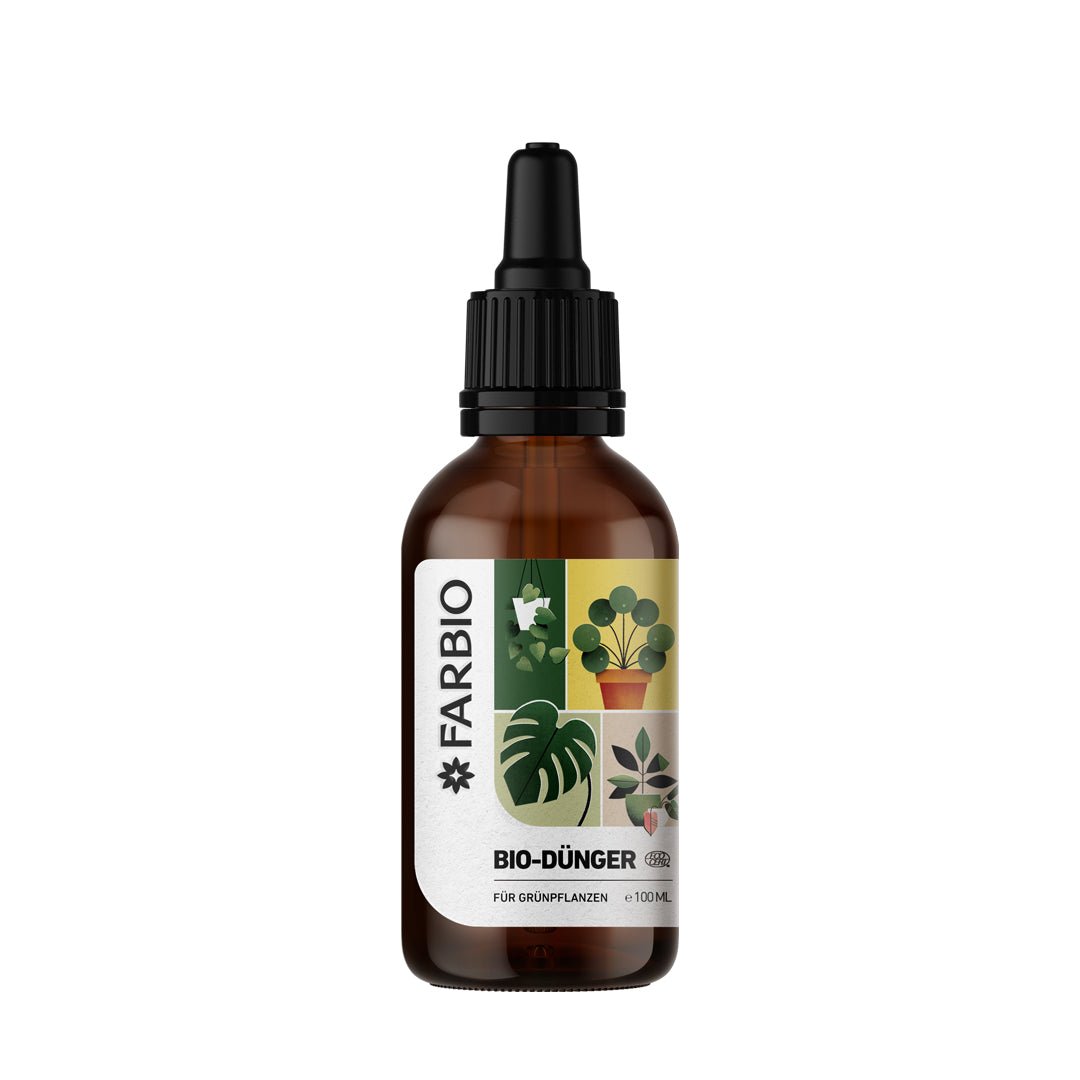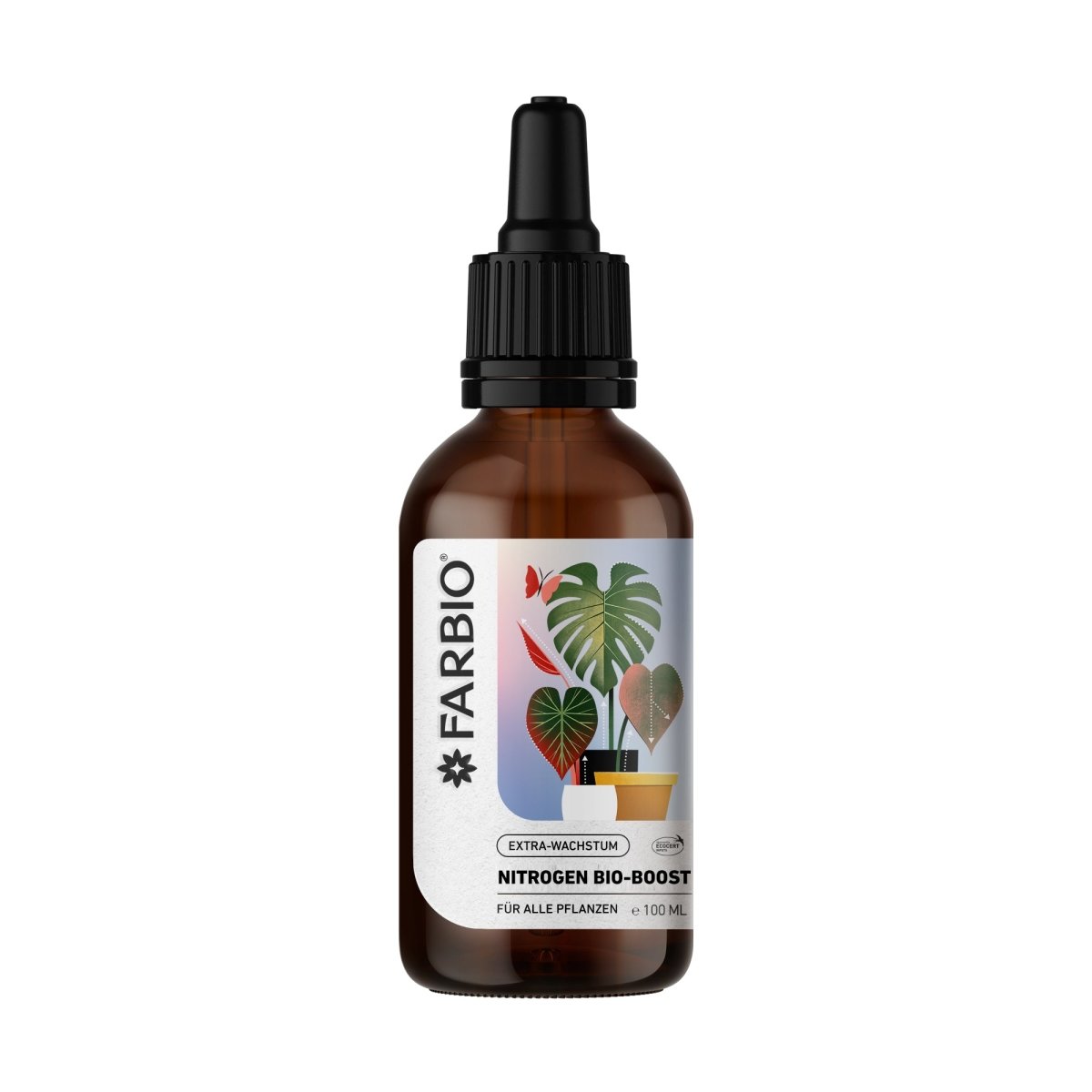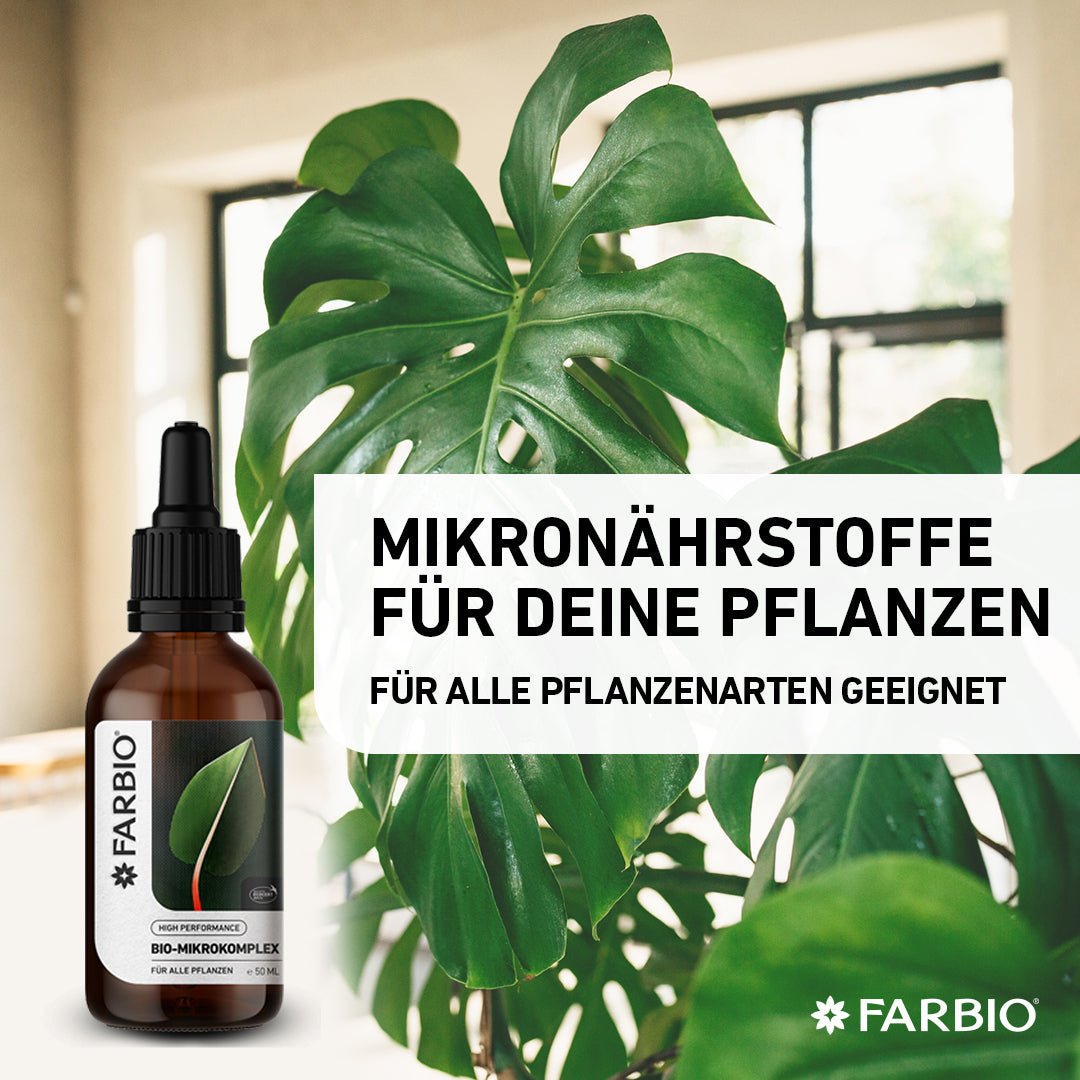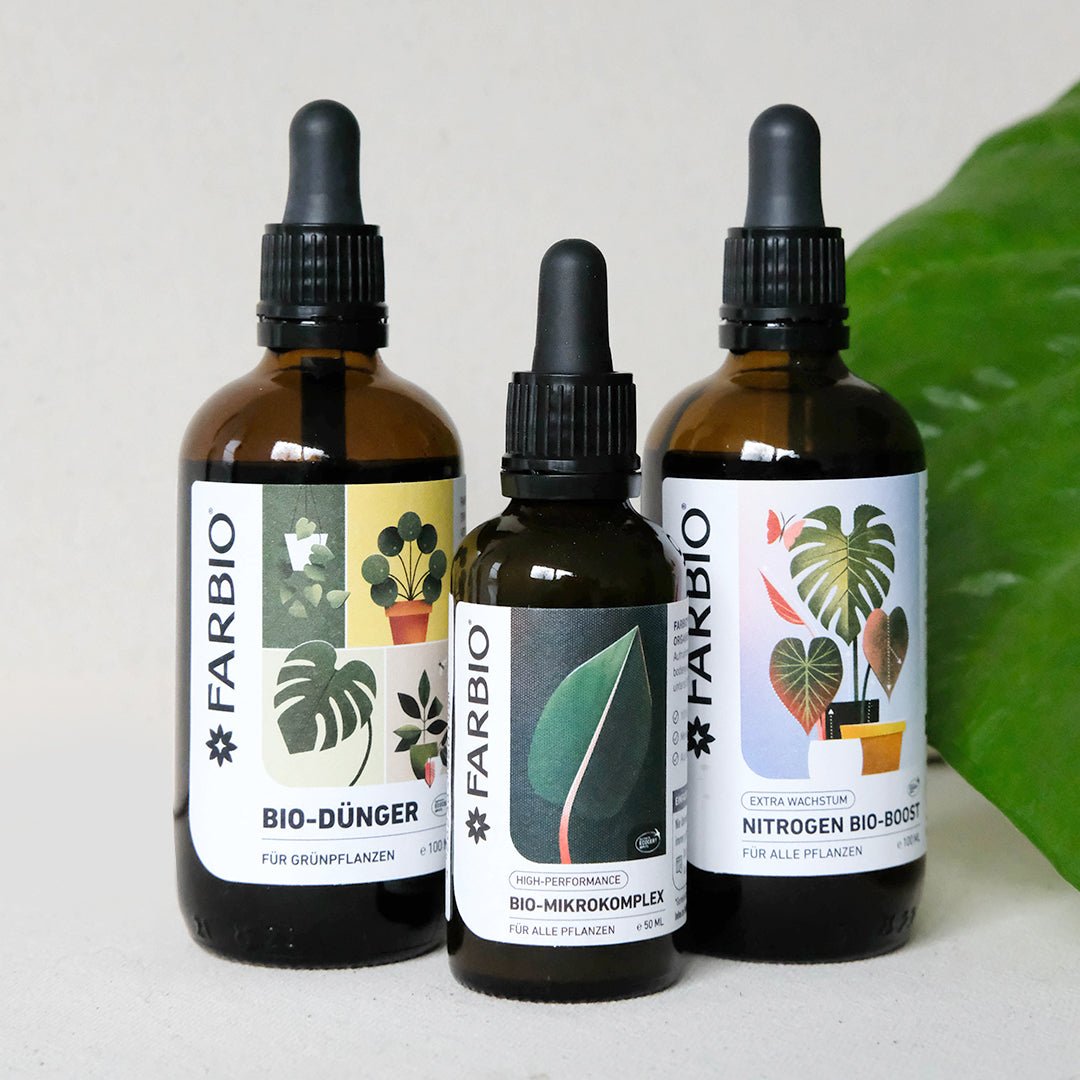Why is fertilizing important?
Just like us humans, plants need nutrients to grow and develop healthily. Fertilization is an essential process that ensures that our plants receive the necessary nutrients that may not be present in sufficient quantities in the soil. Due to their impressive size, most palm trees rely on a balanced supply. Fertilizing can increase the development of leaves, increasing the beauty of your palms and improving their resistance to diseases and pests.
What makes good palm fertilizer - what nutrients do palms need?
Good palm fertilizers are characterized by a balanced mix of nutrients. These do not have to be specifically tailored to the needs of palm trees, because green plants and palm trees have similar needs. The three main nutrients that palm trees need are nitrogen (N), phosphorus (P) and potassium (K). These are often stated as NPK ratios on the fertilizer packaging.
- Nitrogen (N) is important for leaf growth and the formation of green leaves. A lack of nitrogen leads to pale leaf color and reduced plant growth.
- Phosphorus (P) supports root development and contributes to the formation of flowers and fruits of a plant. A lack of phosphorus can affect the growth of the plant.
- Potassium (K) is crucial for strengthening plant cells and regulating water balance. It makes the plant more resistant to drought and disease.
If the leaves of the palm tree turn yellow and curl, then this may be due to a lack of nutrients. In this case, in addition to the main nutrients, it is also recommended to consume trace elements, for example: iron, manganese, copper, zinc.
The FARBIO® organic microcomplex is plant care at its best: plant protection, plant healing and micronutrients in one. The 100% organic and vegan leaf fertilizer supplies all types of plants with important micronutrients and significantly increases the natural processes within the plant through nanoparticle technology and bio-stimulants.
The most beautiful and popular palm trees for your home
Before we delve further into fertilizing, it is important to find the right types of palm trees for your home:
1. Areca Palm ( Dypsis lutescens ):
Appearance: The Areca palm has slender, pinnate leaves that grow in a fan arrangement. Its leaves are rich green and give the palm an elegant look. It is one of the most popular indoor palms.
Origin: The Areca palm originally comes from the tropical regions of Madagascar. It is also called the golden fruit palm!
Care tips: The Areca palm prefers a bright location, but without direct sunlight. It should be kept in a well-drained substrate. Waterlogging should be avoided as this can lead to root rot.

2. Kentia Palm ( Howea forsteriana ):
Appearance: The Kentia palm has elegant, fan-shaped leaves that grow in a long stem. Its leaves are dark green and slightly curved, giving the plant a majestic appearance.
Origin: The Kentia palm originally comes from Lord Howe Island in Australia.
Care tips: The Kentia palm prefers a bright to partially shaded location. It is relatively easy to care for and can also tolerate somewhat drier air. Regular but not excessive watering is advisable.

3. Dwarf Date Palm ( Phoenix roebelenii ):
Appearance: The dwarf date palm has pinnate, feather-like leaves that grow in a bushy habit. Its leaves are deep green and the trunk is slightly thicker - this gives the palm a compact look.
Origin: The dwarf date palm comes from Southeast Asia, especially Thailand and Malaysia.
Care tips: The dwarf date palm prefers a bright location and can also tolerate some sun. It requires regular watering and should be protected from drafts. Occasional spraying of the leaves increases the humidity and promotes the well-being of the plant.

4. Elephant Foot Palm ( Beaucarnea recurvata ):
Appearance: The elephant foot palm has an unusual and distinctive trunk that resembles an elephant foot. Long, narrow, green leaves grow at the top and curve slightly downwards.
Origin: The elephant foot palm originally comes from Mexico and other parts of Central America.
Care tips: The elephant foot palm prefers a bright to partially shaded location. It is extremely easy to care for and requires little water. The soil should be well-drained to avoid waterlogging.

5. Mountain Palm ( Chamaedorea elegans ):
Appearance: The mountain palm has delicate, pinnate leaves that grow in a rosette-like arrangement. Its leaves are medium green and give the palm a charming, compact look.
Origin: The mountain palm comes from Central America, particularly Mexico and Guatemala.
Care tips: The mountain palm prefers a bright to partially shaded location, but can also thrive in shady areas. It requires regular watering and should be protected from drafts. The mountain palm is an ideal houseplant for beginners because it is easy to care for.

Do palm trees need special fertilizer?
Since palm trees don't have any special requirements, it doesn't necessarily have to be a palm fertilizer. These products are more expensive than green plant fertilizers and often contain the same nutrient composition. A distinction is made between mineral fertilizers and organic fertilizers. Mineral fertilizers are manufactured artificially - the nutrients are present in salts. Organic fertilizers consist of natural materials of plant or animal origin.
The FARBIO® liquid fertilizer for green plants provides your palm trees with the most important organic nutrients that are important for healthy growth, powerful leaves and strong roots. The application also stimulates the formation of leaf green. The basic supply consists of a balanced ratio of nitrogen, phosphorus and potassium – the essential macronutrients. The organic liquid fertilizer ensures healthy and living soil, which makes your palm trees more resistant to diseases and pest infestations.
Alternative to palm fertilizers
Long-term fertilizer in the form of granules, pellets or fertilizer sticks can simply be worked into the planting hole when planting or transplanting. This ensures continuous fertilization and nutrients are released with every watering process. However, this has the disadvantage that it cannot be determined exactly when the palm tree receives how many nutrients - this can lead to an undersupply because the nutrients do not reach the plant's roots in time through the irrigation water.
Numerous home remedies can also be used to add fertilizer. Your coffee grounds, for example, make good palm fertilizer - they contain the three main nutrients and some trace elements. You can simply mix it into the plant substrate. However, you always have to make sure that the set does not get moldy.
Buying palm fertilizer: This is what you need to pay attention to
Although palm trees are generally considered undemanding, choosing the wrong palm fertilizer or the wrong dosage will cause palm trees to die. So there are some important points to consider when buying palm fertilizer:
NPK ratio: Look for a balanced NPK ratio on the packaging.
Trace elements: Make sure that you also supply your plant with important trace elements such as magnesium, iron and zinc when fertilizing.
Easy to use: Palm fertilizer should be applied regularly - easy application and precise dosing is therefore essential, e.g. using a pipette!
Quality: Choose a high-quality and environmentally friendly fertilizer for best results and to prevent over-fertilization. Natural fertilizers that are specifically designed for houseplants are best.

How often should you fertilize palm trees?
In general, it is advisable to fertilize your palm tree more frequently during its active growth period, which occurs in spring and summer. Then it is recommended to use a fertilizer every two to four weeks. During the rest period in autumn and winter you need to fertilize less.















